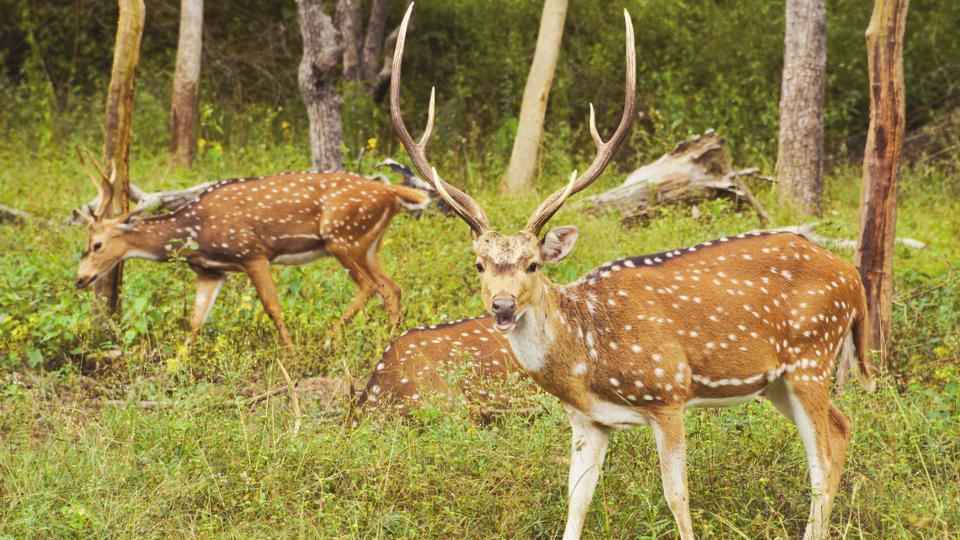The Pench Tiger Reserve (PTR) in Madhya Pradesh is experiencing a unique ecological conflict due to the overpopulation of spotted deer, also known as chital. This situation is leading to stress on the reserve’s habitats, particularly the grasslands.
Unique Ecosystem of PTR
- Size and Features: The PTR spans 400 square kilometers and is characterized by its unique woodland grass, which is the second most preferred habitat for spotted deer after open grasslands.
- Deer Population: The sanctuary is home to over 40,000 spotted deer, primarily due to its rich habitat, abundant water sources, and the absence of human habitation in the core area.
Implications of Overpopulation
- Habitat Stress: The dense population of spotted deer is putting pressure on both woodland grass and grassland habitats, creating an ecological imbalance.
- Impact on Prey Base: Interestingly, the overpopulation in PTR has also positioned it as a resource for other tiger reserves facing prey shortages.
Management Strategies
- Relocation Efforts: To address the overpopulation, authorities have begun relocating spotted deer to other reserves. Over the past two years, approximately 2,000 deer have been shifted to Kuno National Park and Satpura Tiger Reserve to support their prey bases.
- Ongoing Measures: The process of relocating herbivores is ongoing to alleviate the strain on PTR’s habitats.
Habitat Characteristics
- Flora and Fauna: PTR features open canopy mixed forests with significant shrub cover and grassy patches, promoting high herbivore populations.
- Population Density: PTR boasts the highest density of herbivores in India, at 90.3 animals per square kilometer, and the second highest prey base biomass (6013 kg per square kilometer) after Nagarhole.
Predators in PTR
The primary predator in the Pench Tiger Reserve is the tiger, followed by other species such as leopard, wild dog, and wolf.
Multiple-Choice Questions (MCQs):
1. What is the primary ecological issue currently facing the Pench Tiger Reserve?
A) Underpopulation of predators
B) Overpopulation of spotted deer
C) Lack of water sources
D) High human habitation
Answer: B) Overpopulation of spotted deer
2. How many spotted deer has the PTR shifted to other reserves over the past two years?
A) 1,000
B) 2,000
C) 3,000
D) 4,000
Answer: B) 2,000
3. Which habitat is preferred by spotted deer after grasslands in PTR?
A) Dry forests
B) Woodland grass
C) Marshlands
D) Pine forests
Answer: B) Woodland grass
4. What is the estimated density of herbivores in PTR?
A) 60.3 animals per sq km
B) 75.3 animals per sq km
C) 90.3 animals per sq km
D) 100.3 animals per sq km
Answer: C) 90.3 animals per sq km
5. Which animal is the primary predator in the Pench Tiger Reserve?
A) Wild dog
B) Leopard
C) Tiger
D) Wolf
Answer: C) Tiger
